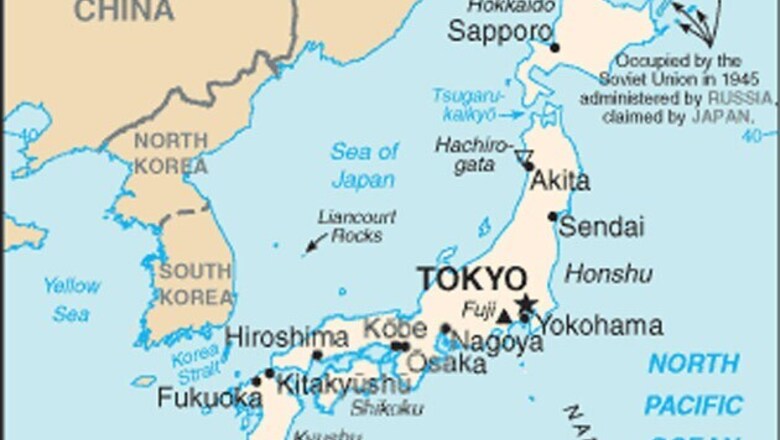
views
BANGALORE: Echoes of ‘O-Genki Desuka?’ (How are you?) and ‘Genki Desu’ (I am fine) was heard from everywhere. Smiling faces greeted you as you entered Jnana Jyothi Auditorium, Central College Campus, where a mini Japan was literally recreated on Sunday. The occasion was the seventh edition of the Japan Habba, which this year, which also coincided with the 60th anniversary of Japan-India diplomatic relations. The theme this year was Kizuna, meaning ‘friendship ties’. Glimpses of traditional tea tasting ceremony, Origami (Japanese art of paper folding) stalls by Indian artistes, Ikebana (Japanese art of flower arrangement) stalls, young Indian women learning how to tie a Kimono and Yukata from Japanese women, a used Japanese books fair, Calligraphy by Japanese School of Bangalore students, ‘Manga by kouryushitai’ (explanation and trial reading of Japanese comic by Japanese boys) made the entire experience more authentic. When we spoke to Kanoko, who hails from Tokyo, about the difference between a Yukata and a Kimono, she said, “Kimono is made out of pure silk and is worn for a formal occasion like a wedding or a baby shower. Whereas, Yukata is made of cotton and is worn casually. It is still common to find women in Japan wearing these traditional outfits.” We found a lot of Indians buying books and magazines in Japanese language from a used books stall and wondered if they really understood the language. Managing director of a MNC in the city, Shige Uehara, was volunteering at the stall. He said, “We collected these books for free from Japanese expatriate families in India and we are selling it here for `5. We have already sold 250 books since morning.” It does look like many people read Japanese in the city. To find out if the craze to learn Japanese is still on, we spoke to Shrushti, a trainer from Japanese Language School. She said, “The number of people who come to us to learn Japanese has multiplied over the years. The demand is a lot higher now, because of personal and professional interests. Many corporates send their employees to Japan on work. We teach the language and also conduct classes on Japanese culture.” When we asked her how long would it take to learn the basics in Japanese, she replied, “A minimum of 100 hours in class, which will take around six months, is required to learn Japanese.”One stall which caught the eye was by Sensei Ravi Carvalho, who displayed Japanese Karate called Kyokushin. It means ‘to seek inner truth’. He demonstrated various defence techniques used for gun and knife attack.Another stall which deserves special mention was by Yashaswini Swalambana Trust, which sold handmade products like candles, chocolates, cotton bags, pouches, paintings and terracotta jewellery made by differently abled and special students.Interestingly, we found many Indian Origami artists, who showed modular/unit Origami, Desillation, and Wet Folding techniques (Origami using water). Mysore-based artist, S F Huseni, who has been working with Kirigami (Japanese art of cutting and folding paper into ornamental objects or designs) for the last 10 years, participated at the Habba for the third time.The show stealer however was the rendition of the Bollywood number ‘Chammak Challo’ (from the movie Ra.one) by members of the Japanese Ladies Association. Dressed in bright golden tops and red coloured harem pants, their performance was greeted with thunderous applause from the audience.Indians too participated with gusto. There were several stalls displaying jewellery Manipuri handicrafts.All in all, it was a sample of a unique culture, which has fascinated many around the world and was a soul-satisfying experience.

















Comments
0 comment